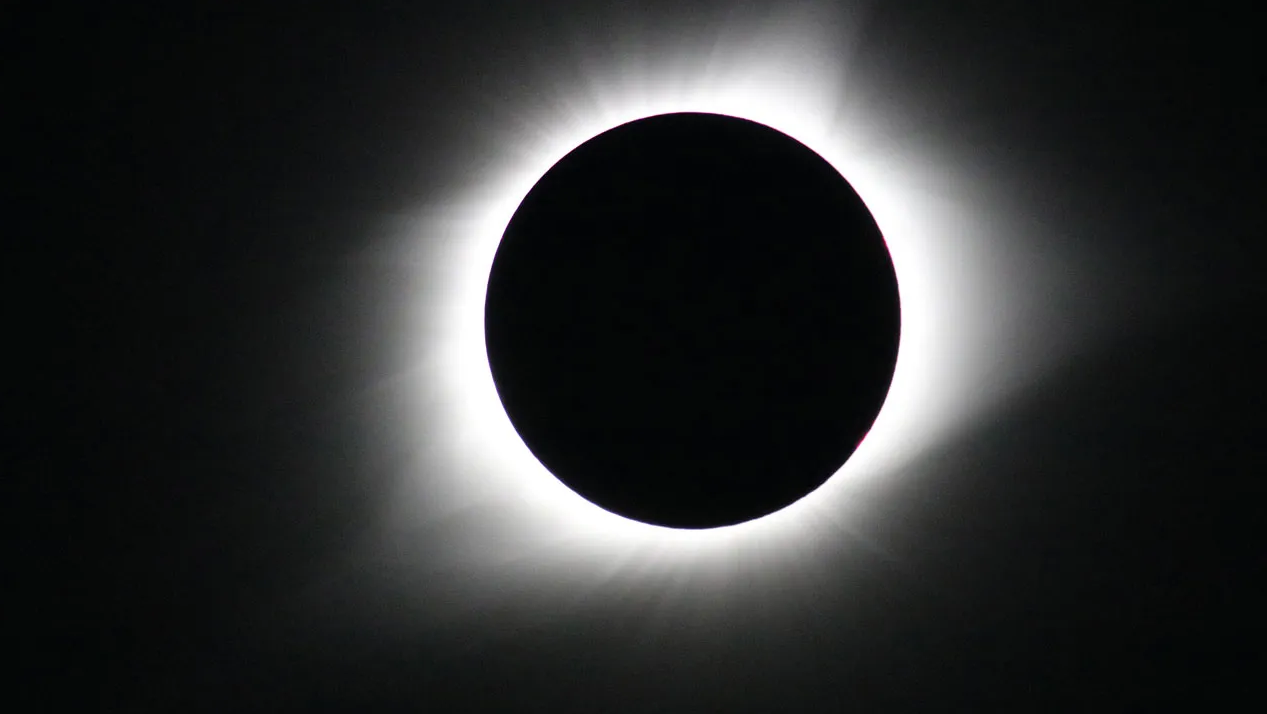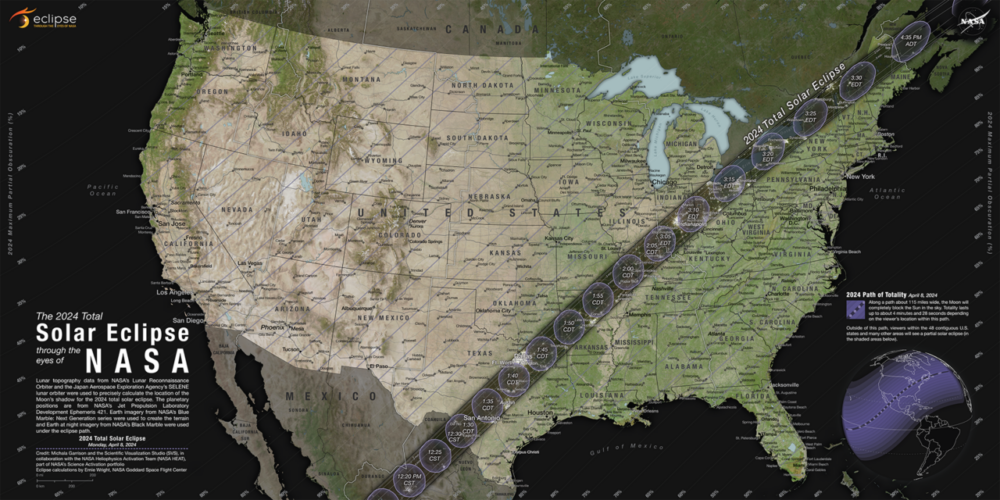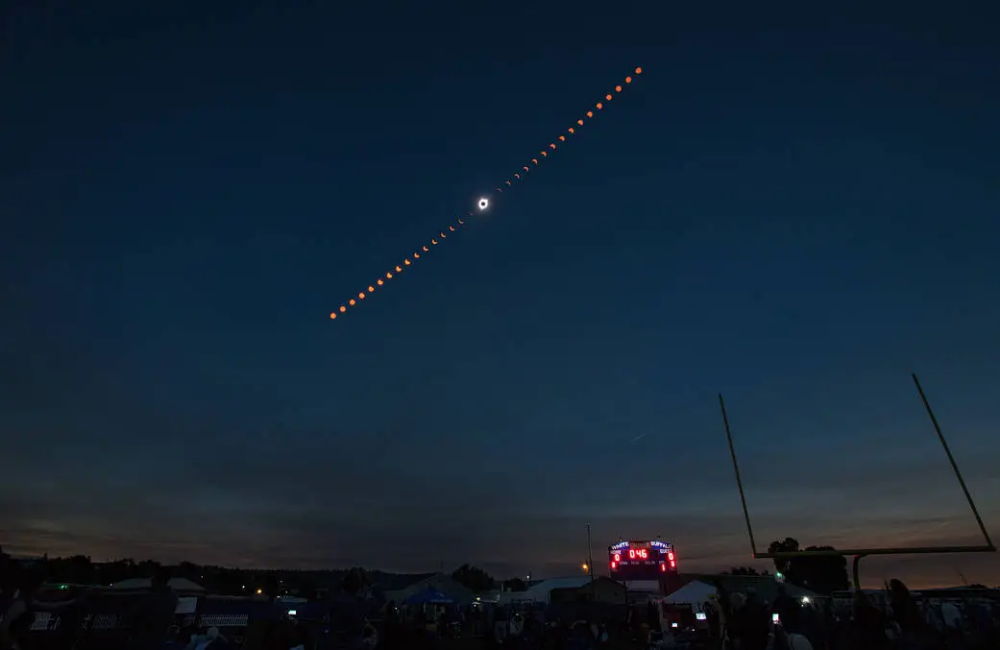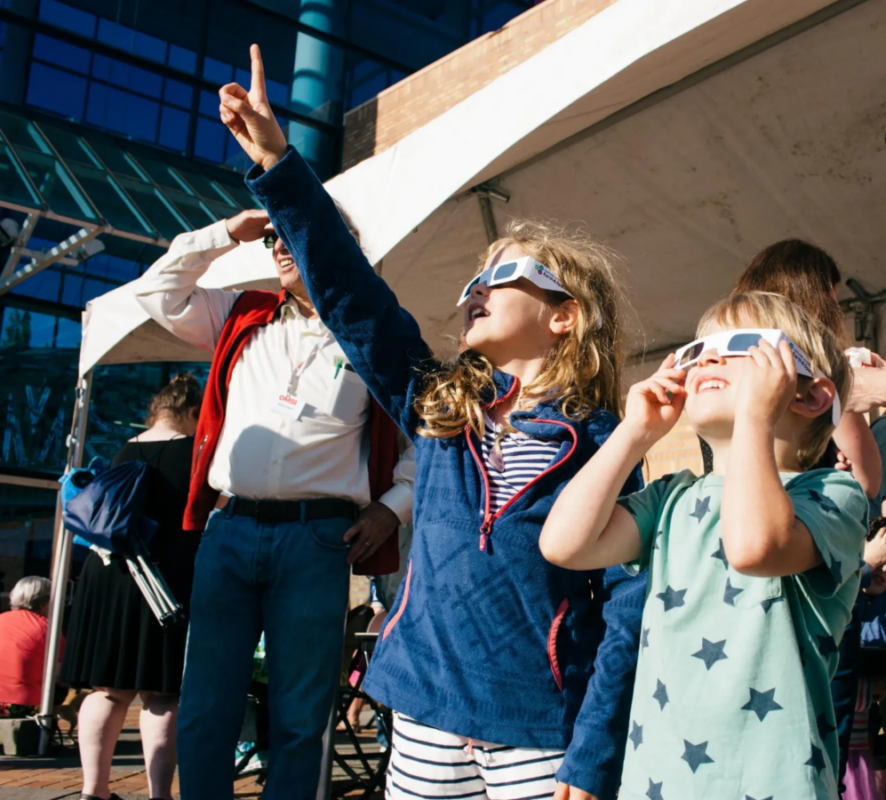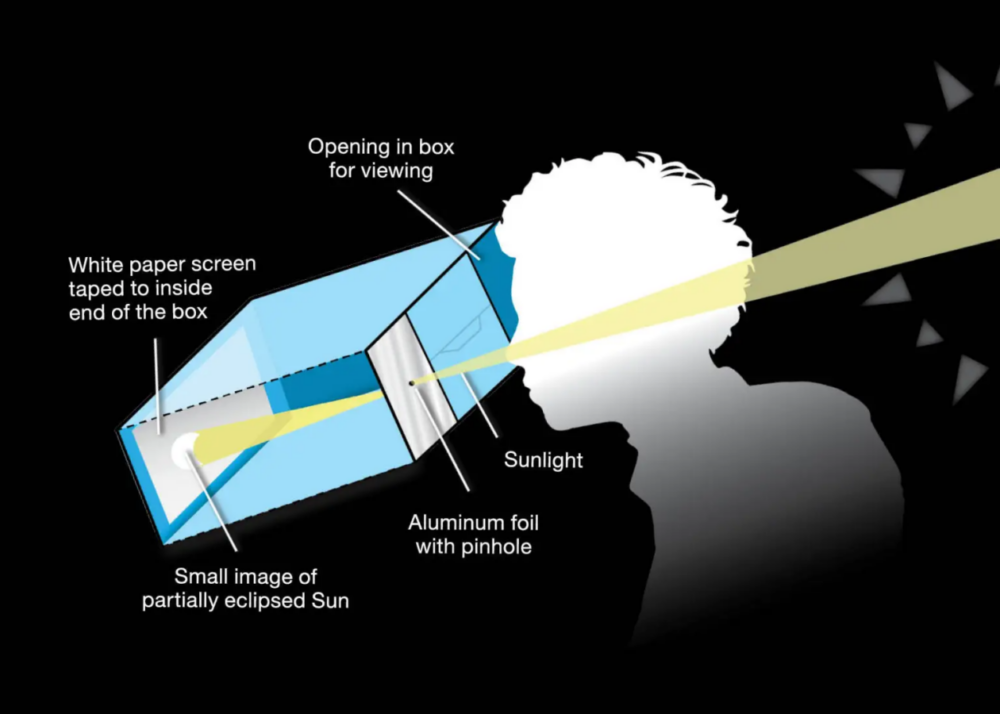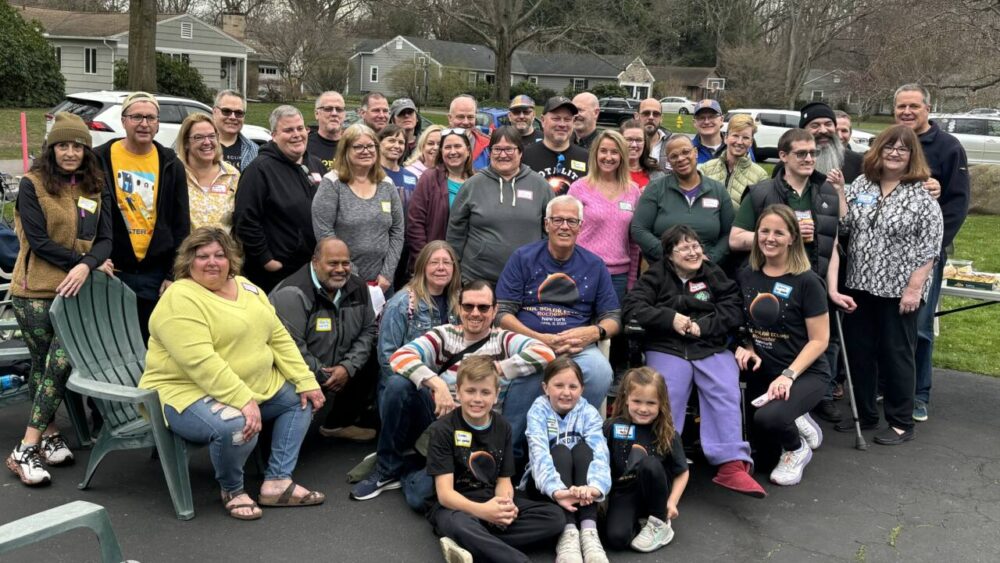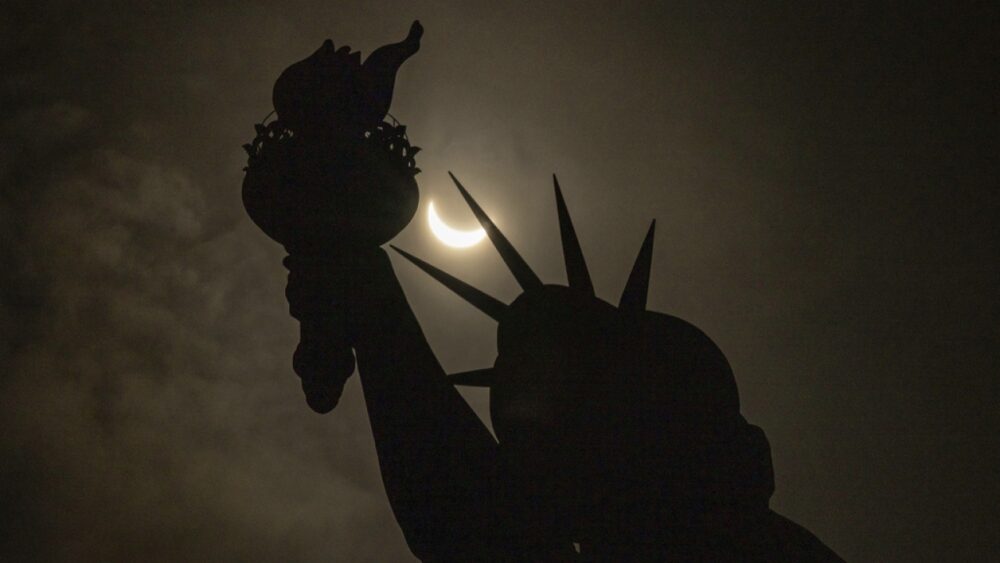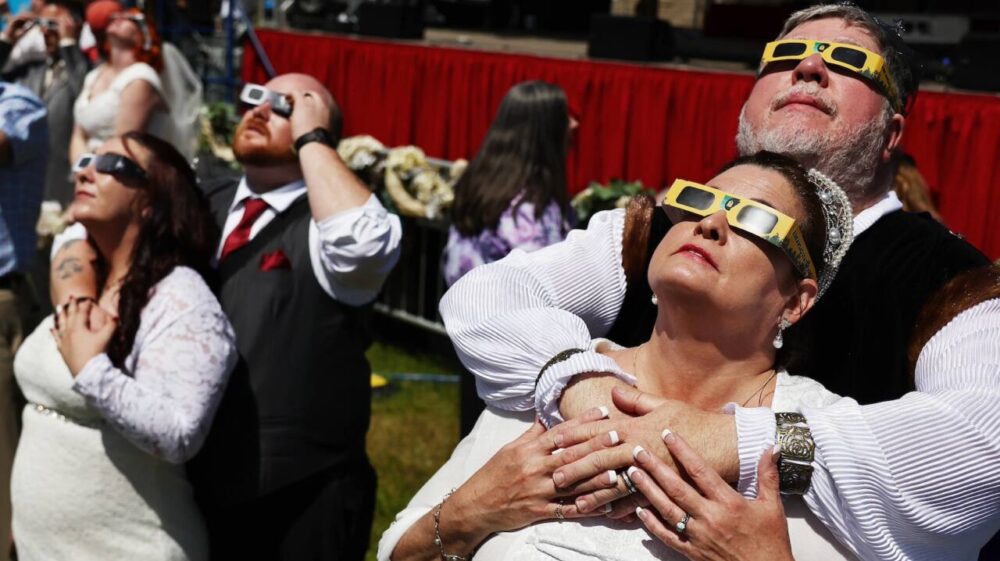How to see the total solar eclipse this spring
The products and services mentioned below were selected independent of sales and advertising. However, Simplemost may receive a small commission from the purchase of any products or services through an affiliate link to the retailer's website.
A total solar eclipse will cross the U.S., Mexico and Canada on April 8. For only a few minutes, skies will be dark or dusk in the middle of the day.
During this brief moment of darkness, observers will be able to see the sun’s corona, or outer atmosphere, which is usually obscured by the sun’s brightness, according to NASA.
MORE: This interactive map shows the best time to see the solar eclipse in your city
A total solar eclipse occurs when the moon passes directly in between the Earth and the sun. Because the moon is so much closer than the sun, it covers the sun entirely.
Total solar eclipses are natural occurrences that happen about every 18 months, but they are viewable in different places each time. The last time a total solar eclipse could be seen in the U.S. was in August 2017, and the next one won’t be until 2044, making this a rare opportunity.
MORE: You could win a trip to see the solar eclipse from an airplane
Where and When to See the Total Solar Eclipse
The path of totality — where the moon will completely block out the sun — cuts a path across the United States stretching from Texas to northern Maine.
If you’re not in the path of totality, you’ll experience a partial eclipse only, with varying degrees of brightness.
MORE: 5 apps to help maximize your total solar eclipse viewing experience
If you’re lucky enough to be along the dark band shown in the map, you’ll have front-row seats to the entirety of the total solar eclipse in April. NASA has explained how to read the eclipse map in detail in this helpful YouTube video:
MORE: The northern lights in 2024 are set to be the best in 20 years
The length of the eclipse, including every stage from start to finish, will last about two and a half hours. That’s from the very beginning of the partial eclipse to the end of the partial eclipse with the total eclipse happening in the middle.
The partial eclipse begins when the moon first begins to cover the sun. A tiny sliver of the moon’s shadow will continue to grow until it completely covers the sun. This part of the eclipse will last about 70 to 80 minutes.
Once the moon completely covers the sun, it’s the moment of totality. For this eclipse, totality will last about three to four minutes.
During this time, it may look like sunset right before skies become dark enough to see a few bright stars or planets in the sky. The air temperature will likely drop for a moment in the absence of the sun.
MORE: You can see the total solar eclipse from these national parks
After totality, the moon begins to move away from the face of the sun and skies begin to brighten again. The same process that happened before totality will happen again in reverse.
Two Ways to Safely Observe the Total Solar Eclipse
It’s not safe to look directly at the sun without special eye protection. Without the right equipment, looking at the sun can instantly cause severe eye injuries.
During the eclipse, you’ll need special eclipse glasses, or you can use an indirect viewing method like a pinhole projector.
MORE: How to see the full Worm Moon and the first lunar eclipse of the year
Solar eclipse glasses are much darker than standard sunglasses and comply with specific safety standards necessary for looking directly at the sun.
Pinhole projectors use a small opening to project an image of the sun onto a nearby surface. These can be made with a box, some aluminum foil and a piece of white paper.
You can only look directly at the sun without protection during the short period of totality. Once a little bit of sun reappears, it’s important to begin using the same safety precautions again immediately.
The Next Total Solar Eclipse in the Contiguous U.S.
Total solar eclipses happen fairly regularly, but it’s rare for them to occur in the same place twice during a short time span.
The next solar eclipse visible in the contiguous U.S. will occur on Aug. 23, 2044, but observers will have to travel to Montana to see it.
Another total solar eclipse about a year later on Aug. 12, 2045, will be visible to a larger American audience. The path of totality stretches across the United States from northern California across the Rocky Mountains and Central Plains to Florida.
Jason Meyers is a meteorologist and nature enthusiast who shares entertaining and educational YouTube videos about weather.


